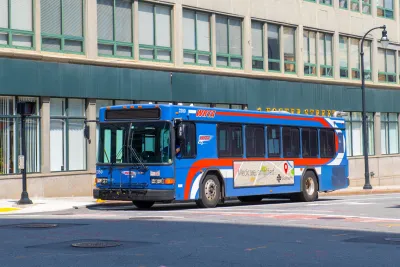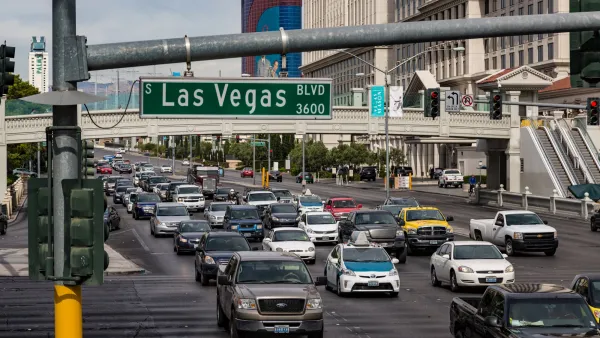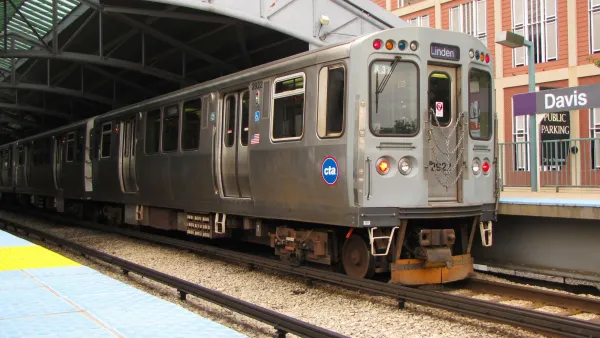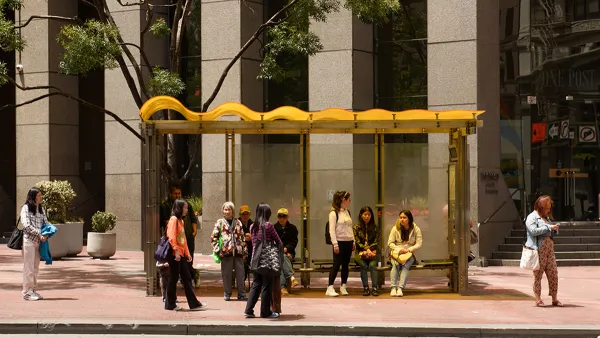Ridership recovery is an uphill battle for transit agencies across the nation, but some metro areas have made progress.

Public transit ridership is still lagging behind pre-pandemic levels in most major U.S. metro areas, according to the American Public Transportation Association’s third-quarter public transportation ridership report. Axios staffers Alex Fitzpatrick and Kavya Beheraj compared the data to 2019 numbers and highlighted key trends.
At a national level, ridership currently stands at 77 percent of pre-pandemic levels. Drilling down to the state level, just nine of around 100 U.S. metro areas with more than 500,000 people had September 2023 public transit ridership at or above 100 percent of September 2019; of those nine, Poughkeepsie, New York (150.3 percent); Worcester, Massachusetts (141percent) and Youngstown, Ohio (130 percent) had the highest.
Fitzpatrick and Beheraj attribute a recent rise in ridership rates for some of the countries biggest transit systems to employers requiring workers to return to the office. New York subway ridership is up 16 percent, Chicago’s L is up 14 percent, and San Francisco’s Muni Metro light rail network has risen 43 percent.
In addition to return to the office, the authors say cities have been experimenting with a variety of tactics to boost ridership, including reduced or waived fares, new and adjusted routes based on people’s post-pandemic travel patterns, and investments in infrastructure.
FULL STORY: Where public transit is recovering — and where it's not

National Parks Layoffs Will Cause Communities to Lose Billions
Thousands of essential park workers were laid off this week, just before the busy spring break season.

Retro-silient?: America’s First “Eco-burb,” The Woodlands Turns 50
A master-planned community north of Houston offers lessons on green infrastructure and resilient design, but falls short of its founder’s lofty affordability and walkability goals.

Delivering for America Plan Will Downgrade Mail Service in at Least 49.5 Percent of Zip Codes
Republican and Democrat lawmakers criticize the plan for its disproportionate negative impact on rural communities.

Test News Post 1
This is a summary

Test News Headline 46
Test for the image on the front page.

Balancing Bombs and Butterflies: How the National Guard Protects a Rare Species
The National Guard at Fort Indiantown Gap uses GIS technology and land management strategies to balance military training with conservation efforts, ensuring the survival of the rare eastern regal fritillary butterfly.
Urban Design for Planners 1: Software Tools
This six-course series explores essential urban design concepts using open source software and equips planners with the tools they need to participate fully in the urban design process.
Planning for Universal Design
Learn the tools for implementing Universal Design in planning regulations.
EMC Planning Group, Inc.
Planetizen
Planetizen
Mpact (formerly Rail~Volution)
Great Falls Development Authority, Inc.
HUDs Office of Policy Development and Research
NYU Wagner Graduate School of Public Service





























